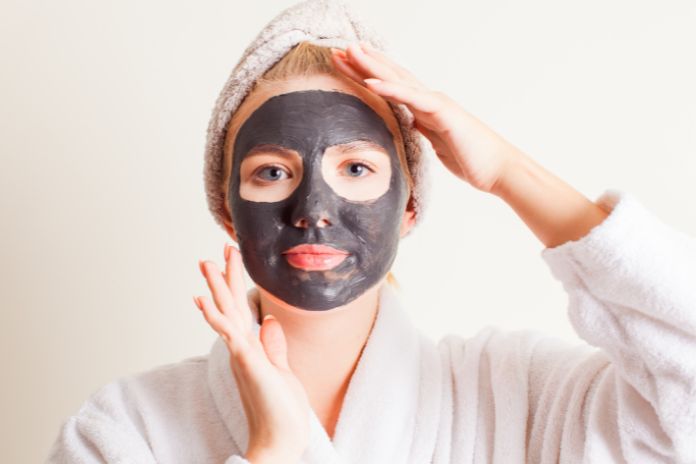When it comes to skincare, it’s no secret that we’re all looking for the best products to help us achieve a flawless complexion. With so many different types of face masks available, it can be difficult to know which one to choose.
Two of the most popular types of masks are charcoal and clay masks. But can you use them both? And which one is better?
In this article, we’ll explore the benefits of both masks and help you decide which one is right for your skin.
Facial masks are an essential part of any skincare routine. They help to remove impurities, unclog pores, and leave your skin looking healthy and radiant. Charcoal and clay masks are two of the most popular types of masks on the market, but they work in different ways. Charcoal masks are designed to absorb excess oil and impurities, while clay masks help to draw out toxins and soothe the skin. In this article, we’ll explore the benefits of both masks and help you decide which one is right for your skin.
Contents
- 1 What is a Charcoal Mask?
- 2 Benefits of a Charcoal Mask
- 3 What is a Clay Mask?
- 4 Benefits of a Clay Mask
- 5 Can I Use Both Charcoal and Clay Masks?
- 6 What’s Better: Charcoal or Clay Mask?
- 7 How to Use Charcoal and Clay Masks
- 8 Tips for Using Charcoal and Clay Masks
- 9 Precautions While Using Charcoal and Clay Masks
- 10 Charcoal Vs Clay Mask: The Final Verdict
- 11 Conclusion
- 12 FAQs
What is a Charcoal Mask?
Charcoal masks are made from activated charcoal, which is a fine black powder that’s made from carbon-rich materials such as wood, coconut shells, or peat. Activated charcoal has a porous structure that helps it to absorb impurities, toxins, and excess oil from the skin.
Benefits of a Charcoal Mask
The benefits of a charcoal mask include:
- Absorbs excess oil: Charcoal masks are great for oily skin as they help to absorb excess oil and reduce shine.
- Unclogs pores: Charcoal masks help to unclog pores by removing impurities and toxins from the skin.
- Exfoliates the skin: Charcoal masks contain small particles that help to gently exfoliate the skin, removing dead skin cells and leaving your skin looking bright and fresh.
- Reduces the appearance of pores: Charcoal masks can help to reduce the appearance of pores by removing impurities and toxins from the skin.
What is a Clay Mask?
Clay masks are made from natural clays such as kaolin, bentonite, or French green clay. These clays are rich in minerals that help to draw out impurities and toxins from the skin.
Benefits of a Clay Mask
The benefits of a clay mask include:
- Removes impurities and toxins: Clay masks are great for removing impurities and toxins from the skin, leaving it looking clean and clear.
- Soothes the skin: Clay masks have a cooling effect on the skin, which can help to soothe irritation and inflammation.
- Reduces the appearance of pores: Clay masks can help to reduce the appearance of pores by drawing out impurities and toxins from the skin.
- Hydrates the skin: Some clay masks contain ingredients that help to hydrate the skin, leaving it feeling soft and smooth.
Can I Use Both Charcoal and Clay Masks?
Yes, you can use both charcoal and clay masks. However, it’s important to
consider the needs of your skin and what you’re looking to achieve. Using both masks can provide a deep cleanse and help to unclog pores, but it’s important to use them correctly and not to overdo it.
If you have oily skin, you may find that a charcoal mask works better for you as it helps to absorb excess oil. If you have dry or sensitive skin, a clay mask may be a better option as it can help to soothe and hydrate the skin.
It’s also important to consider how often you’re using each mask. Overuse of charcoal or clay masks can cause dryness, irritation, and sensitivity. It’s recommended to use each mask no more than once or twice a week, depending on your skin type.
What’s Better: Charcoal or Clay Mask?
Both charcoal and clay masks have their own benefits and are effective in their own way. Choosing the right mask for your skin depends on your individual needs and skin type.
If you have oily or acne-prone skin, a charcoal mask may be more effective as it helps to absorb excess oil and remove impurities. If you have dry or sensitive skin, a clay mask may be a better option as it helps to hydrate and soothe the skin.
Ultimately, the best mask for you is the one that works for your skin type and addresses your specific skincare concerns.
How to Use Charcoal and Clay Masks
Before using a charcoal or clay mask, it’s important to cleanse your skin to remove any makeup, dirt, or impurities. Apply the mask evenly to your face, avoiding the eye area, and leave it on for the recommended amount of time. Most masks recommend leaving them on for 10-15 minutes.
After the recommended time has passed, rinse the mask off with warm water and gently pat your skin dry with a clean towel. Follow up with your regular skincare routine.
Tips for Using Charcoal and Clay Masks
- Don’t overuse: Overuse of charcoal or clay masks can cause dryness, sensitivity, and irritation. It’s recommended to use each mask no more than once or twice a week, depending on your skin type.
- Patch test: Before using any new skincare product, it’s important to patch test it on a small area of your skin to ensure you don’t have an allergic reaction.
- Follow the instructions: Always read and follow the instructions on the packaging of the mask.
- Don’t leave it on too long: Leaving a charcoal or clay mask on for too long can cause dryness, sensitivity, and irritation. Always follow the recommended time on the packaging.
Precautions While Using Charcoal and Clay Masks
While charcoal and clay masks are generally safe to use, there are some precautions to keep in mind:
- Don’t use on broken or irritated skin
- Avoid the eye area
- Don’t use if you’re allergic to any of the ingredients
- Discontinue use if you experience any irritation or sensitivity
Charcoal Vs Clay Mask: The Final Verdict
Both charcoal and clay masks have their own benefits and are effective in their own way. Choosing the right mask for your skin depends on your individual needs and skin type.
If you have oily or acne-prone skin, a charcoal mask may be more effective as it helps to absorb excess oil and remove impurities. If you have dry or sensitive skin, a clay mask may be a better option as it helps to hydrate and soothe the skin.
Here’s a table comparing charcoal and clay masks:
| Charcoal Mask | Clay Mask |
|---|---|
| Made from activated charcoal, which is a fine black powder made from carbon-rich materials | Made from natural clays such as kaolin, bentonite, or French green clay |
| Absorbs excess oil and removes impurities | Draws out impurities and toxins from the skin |
| Contains small particles that help to gently exfoliate the skin | Has a cooling effect on the skin, which can help to soothe irritation and inflammation |
| Can help to reduce the appearance of pores | Can also help to reduce the appearance of pores |
| Great for oily or acne-prone skin | Great for dry or sensitive skin |
| Should be used no more than once or twice a week | Should also be used no more than once or twice a week |
| May cause dryness, sensitivity, or irritation if overused | May cause dryness, sensitivity, or irritation if overused |
| Can be used in combination with a clay mask for a deep cleanse | Can also be used in combination with a charcoal mask for a deep cleanse |
Conclusion
Facial masks are a great addition to any skincare routine and can help to improve the appearance and texture of your skin. Charcoal and clay masks are both popular choices, but they work in different ways and have different
benefits. Charcoal masks are great for absorbing excess oil and unclogging pores, while clay masks help to draw out impurities and soothe the skin.
You can use both charcoal and clay masks, but it’s important to consider your skin type and specific skincare concerns. Overuse of either mask can cause dryness, sensitivity, and irritation, so it’s recommended to use them no more than once or twice a week.
Ultimately, the best mask for you is the one that works for your skin type and addresses your individual needs. Remember to patch test any new skincare product and follow the instructions on the packaging for best results.
FAQs
Can I use both charcoal and clay masks in the same skincare routine?
Yes, you can use both masks in the same skincare routine, but it’s important to not overdo it and to consider your skin type and specific skincare concerns.
How often should I use a charcoal or clay mask?
It’s recommended to use each mask no more than once or twice a week, depending on your skin type.
Can charcoal and clay masks cause dryness or sensitivity?
Overuse of either mask can cause dryness, sensitivity, and irritation. It’s important to follow the recommended usage and to consider your individual needs and skin type.
Can I use a charcoal or clay mask if I have sensitive skin?
Yes, but it’s important to patch test the mask on a small area of your skin before using it and to follow the recommended usage on the packaging.
What’s the difference between a charcoal and clay mask?
Charcoal masks are designed to absorb excess oil and impurities, while clay masks help to draw out toxins and soothe the skin. Choosing the right mask for your skin depends on your individual needs and skin type.

